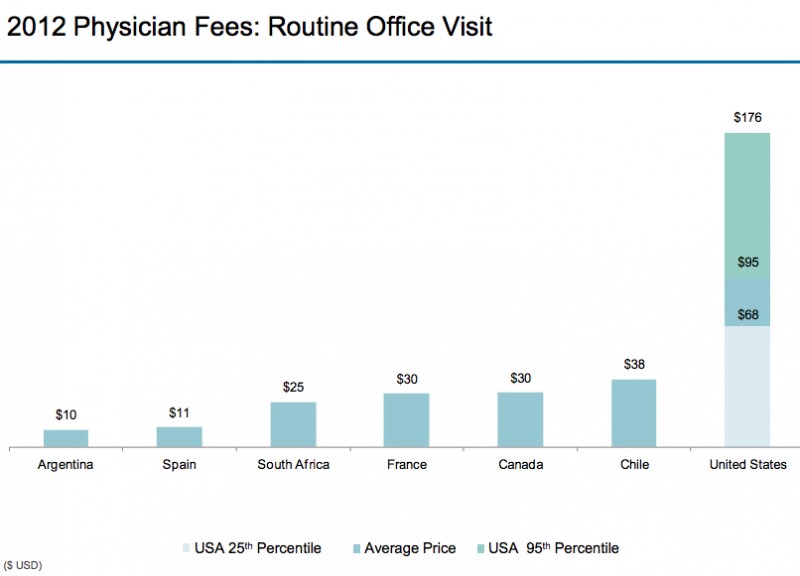
As Matt Yglesias points out, one of the many reasons health care is so expensive in the United States: doctors are paid way too much. See also: 21 graphs that show America’s health-care prices are ludicrous. And after that: The Serpent on the Staff.
Along with pretty much always being on the wrong side of reform, the American Medical Association has contributed heavily to this problem. First, by working to artificially limit the supply of doctors for decades, and thus helping to ensure the doctors we do have are burdened with crushing amounts of debt. Second, by pushing for a cap on Medicare-supported residencies in 1997, further decreasing the US supply of doctors — They’ve since reversed course on that. And third, by continually skewing Medicare payment models and reimbursement rates. Don’t expect this issue to be resolved anytime soon.
